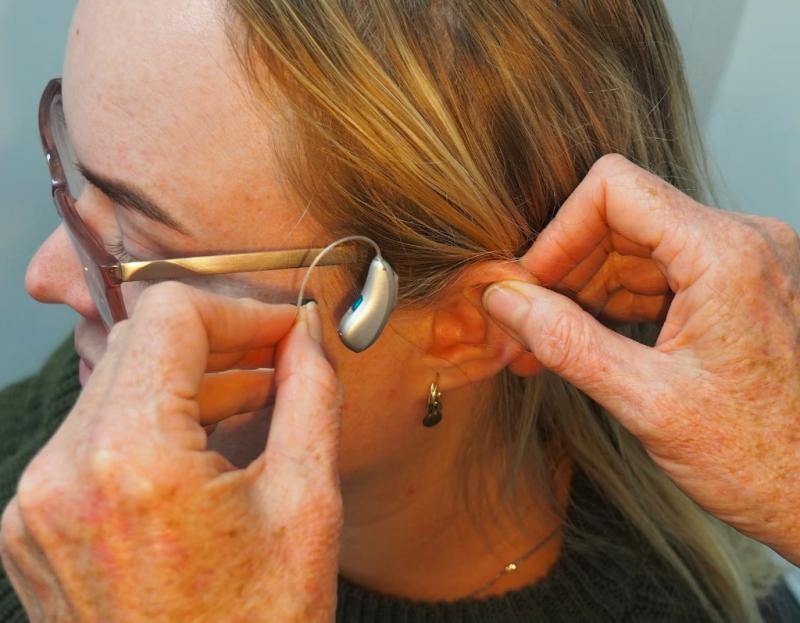How to Pick the Right Hearing Aids
There are 48 million Americans who suffer from hearing loss, and if you’re one of them, you may wonder if hearing aids can help you. Hearing aids cannot restore normal hearing, but they can help you hear better by amplifying sounds you have trouble hearing. If you’re concerned about finding the right hearing aids, you should know that choosing hearing aids is all about what is important to you and your specific needs when using them.
The good thing is that hearing aids are now discreet and comfortable while offering many features. So, there’s a hearing aid for everyone—you just need to find the right one for you. You and your audiologist will determine the best fit for you by examining your specific needs. Then, you can go online and search for hearing aids near me to find the best ones for your needs.
Continue reading to learn about the various types of hearing aids available and how to choose the best for you.

How Do Hearing Aids Work?
They're small, battery-powered devices worn inside or behind your ear to amplify sounds based on the user's unique hearing abilities. The hearing aid magnifies sound vibrations that enter the ear, which helps with hearing and speech comprehension. Regardless of the type, they have three components: a microphone, an amplifier, and a speaker.
They differ in design, amplification technology (digital vs. analog), and other features. In general, the microphone receives sound and translates it into a digital signal. Then, the amplifier amplifies the digital signal, and the speaker delivers the amplified sound to the ears. While hearing aids cannot cure hearing loss, they can help you hear better, participate in conversations, enjoy music, and improve your overall quality of life.
Types of Hearing Aids
The best hearing aids are determined by your type of hearing loss, listening needs, age, ears shape and size, and hand-eye coordination. In addition, some hearing aids are more compatible with smartphones, TVs, and other sound systems than others, and some offer Bluetooth options.
Among the styles are:
- Behind-the-ear hearing aids are worn over the ear and are wired to individually fitted earpieces.
- Receiver-in-the-ear hearing aids are small and almost invisible and are worn over the ear.
- In-the-ear hearing aids go in the ear bowl and part of the ear canal.
- In-the-canal hearing aids are smaller than ITE.
- Completely-in-the-canal hearing aids are the least visible ones.
- Hearing aids on the eardrum are similar to contact lenses.
Which Hearing Aid Fits You Best?
Besides the type and extent of hearing loss, there are other factors to consider when choosing hearing aids.
Lifestyle
Your listening environment and lifestyle will significantly impact which hearing aid is best for you. For instance, if you walk every day and your area is frequently windy and damp, you'll need a device that can filter out wind noise and be waterproof. Similarly, if you regularly cycle, you should ensure that your device is sweatproof and will stay in or on your ears. Smaller hearing aid styles, such as IIC, ITC, and CIC, will be better options if you have a more active lifestyle because they are less susceptible to wind noise.
But if you spend a lot of time at home, the style of your device may be less important to you than the features it offers. For example, many digital aids now include Bluetooth connectivity to connect directly to your smartphone, TV, or music.
Visibility
A small ITC device would be best if you prefer to keep your hearing aids covert. Consult your audiologist to understand which ones are available to you to decide the best device. If you have severe hearing loss, choose more compact BTE aids.
If you aren't concerned about the visibility of your device, you have many different styles and price points to choose from, including ITE and BTE styles.
Budget
The prices vary greatly, and your healthcare professional will recommend a device that is within your budget based on the factors listed above.
Prices for each device can range from less than $1,000 to over $4,000, depending on the features. We must mention that insurance providers might not cover the cost. But if you choose a quality device and take proper care of it, you can save money on repairs.

Wrapping Up
Hearing aids are available in both digital and analog models. They’re available in many models and styles. The main variations are determined by the position of the device in relation to your ear.
Many factors influence the best fit for you, including the severity of hearing loss, lifestyle, cosmetic preferences, and budget. Consult a doctor for advice on the best type of hearing aid for your specific needs.
More to Read:
Previous Posts:








